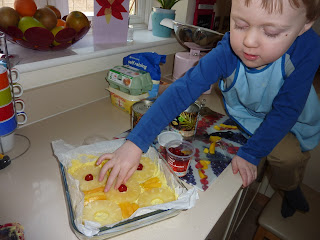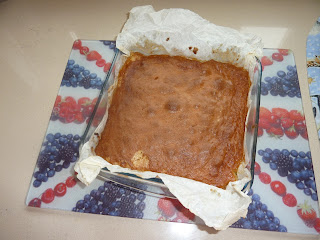As the economy continues to struggle, penny pinching is reaching new levels for us all. So this month I’m in a frugal frame of mind with some ideas for tasty dishes following on from a traditional roast Sunday lunch. Don’t think of it as leftovers, think of it as new beginnings. You’ll be amazed how much you can make if you use a little imagination. I’ve given you a few recipes here, along with some ideas for you to experiment with. Get creative with your cupboard contents!
My top 5 store cupboard saviours:

1.
Dried or tinned beans and pulses – these can make a little meat go a long way as they absorb all the flavour and add bulk and valuable protein to your casseroles and stews.
2. Dried tarragon – many dried herbs really suffer from the drying process and lack flavour. Tarragon is one exception and works brilliantly with chicken and fish. It really gives a fragrant boost so use sparingly.
3. Vermouth – I always keep a bottle of vermouth as you can use it in place of white wine and it keeps well once opened.
4. Roasted red peppers in a jar – chargrilled and peeled peppers are fantastic. They’re bursting with flavour and can transform a dish in seconds.
5. Pesto – this is as close as I get to a ready meal! Instant sauce that can be added to pasta, mash or rice. Add a squeeze of lemon to lift the flavour and cut through the richness.
Roast chicken
What to do with leftover roast chicken? Here’s some ideas:
…stock…chicken and chorizo paella…chicken, lemon and pesto spaghetti…chicken and bacon pot pies…fajitas…chicken and mushroom lasagne…chicken and leek risotto.
Stock
First, strip all the meat from the carcass remembering the juicy little oysters that have so much succulence and flavour. Then use the carcass and any remaining chicken skin to make stock. If it’s only a small chicken, you can save the bones in the freezer in a bag until you have enough.
● Place the carcass in a large saucepan and add an onion, a carrot and a stick of celery with some bay leaves, thyme and seasoning.
● Add a dash of wine (optional) and cover with water.
● Cover and boil for 2 hours, then drain through a sieve and store in a plastic container.
Chicken and chorizo paella
Serves 4
- 1 large onion, finely chopped
- 2 cloves garlic, crushed
- 300g rice – you can get paella rice, but basmati will work fine
- A dash of white wine or vermouth
- 100g frozen peas
- 100g chorizo picante, skinned and cut into 1cm cubes
- 2 tsp paprika
- 2 tsp dried tarragon
- Zest and juice of a lemon
- 600ml chicken stock
- Sea salt and freshly ground black pepper
- Fry the onion and chorizo in a little olive oil in a wide shallow sauté pan until golden and the chorizo has released its oil, then add the garlic to soften for a minute.
- Stir the rice through to make sure each grain is coated in the lovely oil from the chorizo.
- Add the wine and let it bubble through and reduce a little.
- Add the rest of the ingredients then stir, cover and simmer gently for around 20 minutes.
- Turn off the heat and leave to rest for 5 minutes before serving in warmed bowls with a wedge of lemon.
Roast lamb
What to do with leftover roast lamb? Here’s some ideas:
…lamb and bean casserole…spiced lamb soup…shepherd’s pie with root mash topping…lamb pittas with harissa and mint dressing…lamb samosas…fruity lamb curry…
Use leftovers from the roast dinner to make shepherd’s pie with root mash topping.
● Fry a finely chopped onion until golden and add leftover lamb and green beans chopped into small pieces. Add any leftover gravy and a dash of Worcestershire sauce. Simmer for 10 minutes, place in an ovenproof roasting dish then set aside to cool.
● Mash together the leftover potatoes, swede and carrots and season well.
● Spread the root mash over the cooled meat filling and use a fork to create a rough surface.
● Bake at 190oC for 30 minutes until golden brown and piping hot.
Strip the meat from the bone, then use the bone to make a spiced lamb soup;
● Fry a chopped onion until golden, add a crushed clove of garlic and a tsp each of ground cumin, ground coriander and chilli powder.
● Place the lamb bone in the pan, add enough boiling water to cover and 2 tbsp tomato puree.
● Simmer for 1½ hours and 5 minutes before serving add 50g couscous, the juice of a lemon and some chopped fresh mint. Season well with salt and pepper and serve in warmed bowls with pitta bread.
Lamb and bean casserole
Serves 4
I large onion, roughly chopped
2 cloves garlic, crushed
2 tins beans – flageolet, cannellini, borlotti or butter beans are ideal
1 tin chopped tomatoes
500ml lamb stock
Fresh thyme
Roast lamb leg or shoulder cut into strips or chunks

●
In a large pan, fry the onion in a little olive oil until golden. Add the garlic and soften for a minute.
● Add all the rest of the ingredients (don’t add salt at this stage), give it a good stir, cover and place in the oven for 1½ hours.
● Season well with salt and pepper and serve in warmed bowls with some steamed spring greens.
I hope you enjoy my recipes.
Why not follow my blog for other foodie treats
 Step 2. Once that was completed and had dried, I started filling in the main of the bangle. This was also done with tissue paper and glue. I used large rectangles of the tissue paper, painted in glue, wrapping the excess over the frames. Gradually covering both sides of the bangle and allowing drying time between the layers. When finished I had a piece of jewellery (albeit very plain) that was strong enough to be worn.
Step 2. Once that was completed and had dried, I started filling in the main of the bangle. This was also done with tissue paper and glue. I used large rectangles of the tissue paper, painted in glue, wrapping the excess over the frames. Gradually covering both sides of the bangle and allowing drying time between the layers. When finished I had a piece of jewellery (albeit very plain) that was strong enough to be worn. 














































